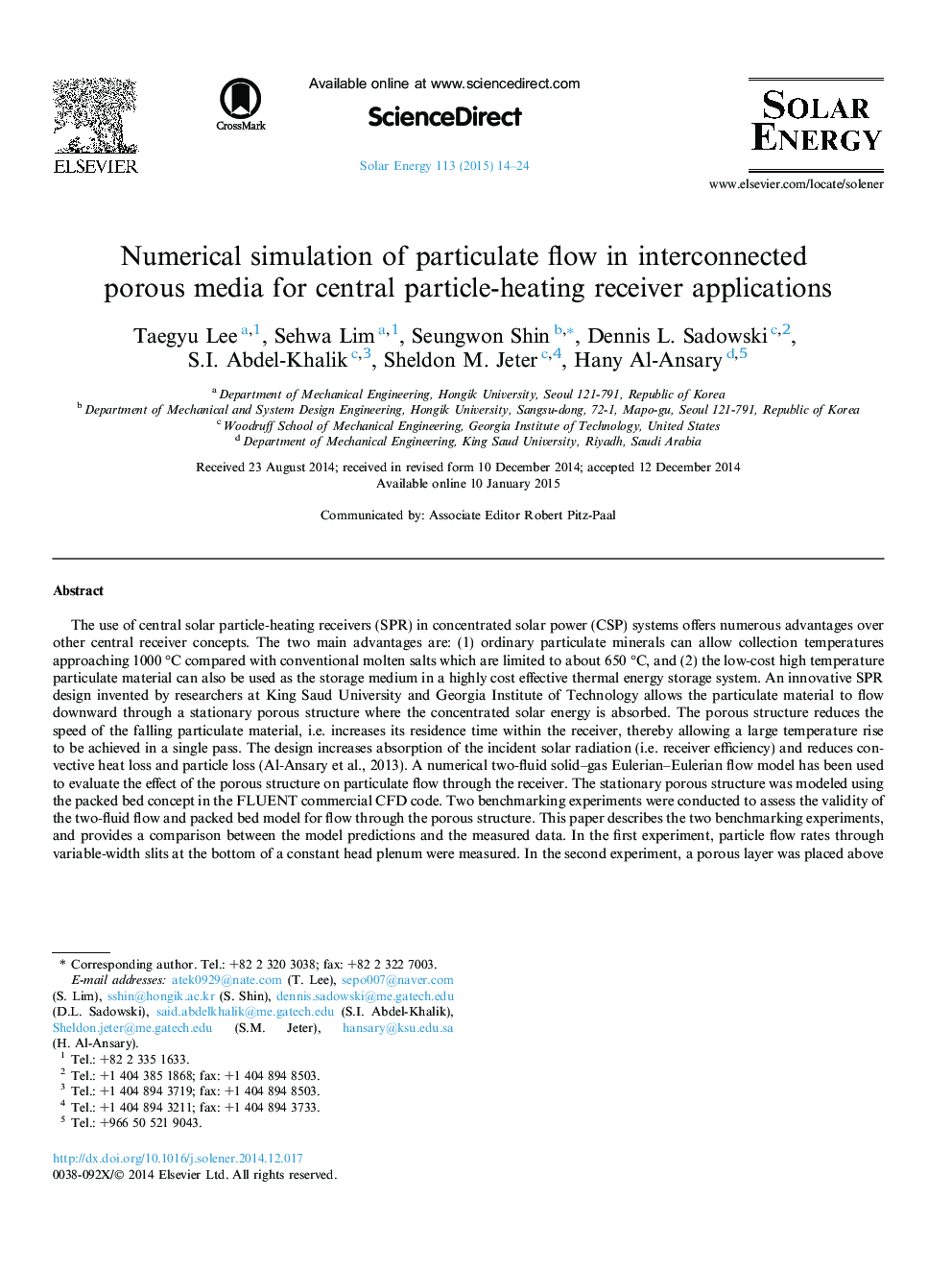| کد مقاله | کد نشریه | سال انتشار | مقاله انگلیسی | نسخه تمام متن |
|---|---|---|---|---|
| 1549708 | 1513105 | 2015 | 11 صفحه PDF | دانلود رایگان |
• Central solar particle-heating receivers (SPR) in CSP allow higher collection temperature.
• A novel SPR was designed where particles flow through a stationary porous structure.
• A numerical model was developed to evaluate the particulate flow through a porous SPR.
• Two benchmarking experiments have been used to validate the numerical model.
• Model predictions are in reasonable agreement with both experimental data.
The use of central solar particle-heating receivers (SPR) in concentrated solar power (CSP) systems offers numerous advantages over other central receiver concepts. The two main advantages are: (1) ordinary particulate minerals can allow collection temperatures approaching 1000 °C compared with conventional molten salts which are limited to about 650 °C, and (2) the low-cost high temperature particulate material can also be used as the storage medium in a highly cost effective thermal energy storage system. An innovative SPR design invented by researchers at King Saud University and Georgia Institute of Technology allows the particulate material to flow downward through a stationary porous structure where the concentrated solar energy is absorbed. The porous structure reduces the speed of the falling particulate material, i.e. increases its residence time within the receiver, thereby allowing a large temperature rise to be achieved in a single pass. The design increases absorption of the incident solar radiation (i.e. receiver efficiency) and reduces convective heat loss and particle loss (Al-Ansary et al., 2013). A numerical two-fluid solid–gas Eulerian–Eulerian flow model has been used to evaluate the effect of the porous structure on particulate flow through the receiver. The stationary porous structure was modeled using the packed bed concept in the FLUENT commercial CFD code. Two benchmarking experiments were conducted to assess the validity of the two-fluid flow and packed bed model for flow through the porous structure. This paper describes the two benchmarking experiments, and provides a comparison between the model predictions and the measured data. In the first experiment, particle flow rates through variable-width slits at the bottom of a constant head plenum were measured. In the second experiment, a porous layer was placed above the opening at the bottom of the constant head plenum to limit the particle discharge flow. Experiments with two different porous layer heights were conducted using two particle materials with different diameters and densities. The simulation results were in reasonable agreement with the test data.
Calculated volume fraction distributions of white sand and proppant particles with a single 2.7 cm thick porous block on top of bottom slit.Figure optionsDownload as PowerPoint slide
Journal: Solar Energy - Volume 113, March 2015, Pages 14–24
